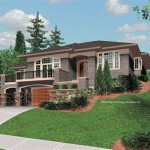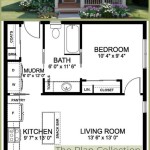Design Your Dream Home: Explore House Plans In North Carolina, USA
North Carolina, with its diverse landscape ranging from the Appalachian Mountains to the Atlantic coastline, offers a compelling backdrop for building a dream home. The state's climate, varying from temperate in the west to subtropical in the east, necessitates careful consideration of architectural designs and building materials. Finding the right house plan that complements both the environment and the homeowner's lifestyle is crucial for a successful building project.
The process of designing and building a custom home in North Carolina begins with exploring available house plans. These plans serve as blueprints, detailing the layout, dimensions, and features of the proposed dwelling. A wide variety of architectural styles and functional layouts exist, catering to the varied preferences and needs of potential homeowners. Understanding the available options and associated considerations is essential for making informed decisions throughout the design and construction phases.
Understanding Architectural Styles and Their Suitability for North Carolina
North Carolina’s architectural landscape is rich and varied, reflecting its history and diverse geographical regions. Several architectural styles are particularly well-suited to the state's climate and regional aesthetics. These styles often incorporate features designed to maximize comfort, energy efficiency, and visual appeal.
The Craftsman style, characterized by its emphasis on natural materials, handcrafted details, and low-pitched roofs, is a popular choice. Its inherent sturdiness and focus on functionality make it suitable for both mountain and coastal regions, where durability and practicality are paramount. Exposed rafters, wide porches, and built-in cabinetry are hallmarks of this style, lending a sense of warmth and character to the home.
Another prevalent style is the Colonial Revival, a modernized adaptation of historical Colonial designs. This style typically features symmetrical facades, prominent entryways, and evenly spaced windows. Colonial Revival homes often incorporate brick or wood siding, adding to their sophisticated and timeless appeal. The style’s inherent adaptability allows for variations that suit individual preferences, making it a versatile choice for various locations within North Carolina.
For those seeking a more contemporary aesthetic, modern farmhouse designs offer a blend of rustic charm and modern functionality. These homes often feature clean lines, open floor plans, and large windows that maximize natural light. The integration of natural materials, such as wood and stone, further enhances the connection to the surrounding environment. Modern farmhouse designs are particularly well-suited to rural or semi-rural settings, providing a tranquil and comfortable living space.
Coastal homes in North Carolina often embrace designs that prioritize views and resilience to the elements. Elevated foundations, impact-resistant windows, and durable siding materials are crucial for withstanding hurricanes and coastal storms. Open floor plans and expansive decks allow residents to fully appreciate the scenic vistas. These coastal designs often incorporate elements of traditional beach cottages while embracing modern technologies and building practices.
Beyond these common styles, a wide range of other architectural options exists, including Ranch, Traditional, and European-inspired designs. The key is to select a style that aligns with the homeowner's preferences, lifestyle, and the specific characteristics of the building site. Consulting with an architect or experienced home builder is recommended to ensure that the chosen style is appropriate for the local climate and building codes.
Key Considerations When Choosing a House Plan
Selecting the right house plan involves careful consideration of several factors beyond architectural style. These factors include budget, size, layout, energy efficiency, and future needs. A well-chosen house plan should not only meet the current needs of the homeowner but also anticipate future requirements and potential changes in lifestyle.
Budgetary constraints are a primary concern for most homeowners. The cost of building a home in North Carolina can vary significantly depending on the location, size, materials, and complexity of the design. Establishing a realistic budget early in the process is crucial for avoiding cost overruns and ensuring that the project remains financially viable. Working closely with a builder or contractor to obtain accurate cost estimates is essential for making informed decisions about the house plan.
The size and layout of the home should be carefully considered to ensure that it meets the homeowner's functional needs and lifestyle. Factors such as the number of bedrooms and bathrooms, the size of the kitchen and living areas, and the presence of a home office or other specialized spaces should be evaluated. The layout should promote efficient traffic flow and maximize the use of available space. Open floor plans are often favored for their ability to create a sense of spaciousness and promote social interaction.
Energy efficiency is another critical consideration, particularly in light of rising energy costs and growing environmental concerns. The house plan should incorporate features that minimize energy consumption, such as proper insulation, energy-efficient windows and doors, and high-efficiency heating and cooling systems. Solar panels and other renewable energy sources can further reduce the home's carbon footprint and lower utility bills. The orientation of the home on the lot can also influence energy efficiency, with south-facing windows maximizing solar gain during the winter months.
Future needs should also be taken into account when selecting a house plan. Consider factors such as potential family growth, the possibility of aging in place, and the need for additional storage space. A flexible floor plan that can be easily adapted to changing needs is a valuable asset. Design features such as wider doorways, ramps, and accessible bathrooms can make the home more accommodating for individuals with mobility limitations.
Furthermore, it's crucial to verify that the chosen house plan complies with all applicable building codes and zoning regulations. Local building codes dictate the minimum standards for safety, structural integrity, and energy efficiency. Zoning regulations may restrict the size, height, and placement of the home on the lot. Obtaining the necessary permits and approvals from local authorities is essential for ensuring that the construction project proceeds smoothly and legally.
Finding and Adapting House Plans in North Carolina
Numerous resources are available to homeowners seeking house plans in North Carolina. These resources include online plan providers, architectural firms, and custom home builders. Each option offers its own advantages and disadvantages, and the best approach depends on the homeowner's individual needs and preferences.
Online plan providers offer a vast selection of pre-designed house plans, often at relatively affordable prices. These plans can be a good starting point for homeowners who have a clear idea of their desired style and layout. However, it's important to thoroughly review the plans and ensure that they meet local building codes and zoning regulations. Online plans may also require modifications to suit the specific characteristics of the building site. Engaging a local architect or engineer to review and adapt the plans is recommended.
Architectural firms offer a more personalized approach to house plan design. Architects work closely with homeowners to understand their needs, preferences, and budget, and then create custom designs that meet those specific requirements. This approach allows for greater flexibility and creativity, ensuring that the final design is perfectly tailored to the homeowner's lifestyle and the characteristics of the site. While architectural services typically involve higher costs than using pre-designed plans, the resulting home is often more valuable and aesthetically pleasing.
Custom home builders often offer in-house design services or work with independent architects to create custom house plans. This approach provides a streamlined process, as the builder is involved from the initial design phase and can ensure that the plans are constructible and within budget. Working with a builder who has experience in the local area and a good understanding of building codes and zoning regulations is essential for a successful project.
Regardless of the chosen approach, adapting the house plan to the specific characteristics of the building site is crucial. Factors such as topography, soil conditions, and sun exposure can influence the design and construction of the home. For example, a sloping lot may require a split-level design or the construction of retaining walls. Poor soil conditions may necessitate the use of special foundation techniques. Optimizing the orientation of the home to maximize solar gain and minimize energy consumption can also significantly improve its overall performance.

Dream House Plans Designs Customizable Home Floor

North Carolina House Plans Floor Designs Houseplans Com

Dream House Plans Designs Customizable Home Floor

Home Page New Elite Design Group

Dream House Plans Designs Customizable Home Floor

Dream House Plans Designs Customizable Home Floor

House Plans Floor Blueprints

Dream House Plans Designs Customizable Home Floor

Mitchell Homes Custom Home Builders Va Nc Sc Md

America S Choice House Plans
Related Posts








